Click on images to enlarge
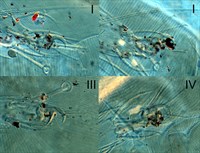
Fig. 1. Panonychus elongatus adult female (non-type) - detail of claws I, III, IV.
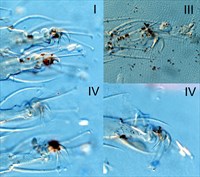
Fig. 2. Panonychus elongatus adult female (non-type) - detail of claws I, III, IV.
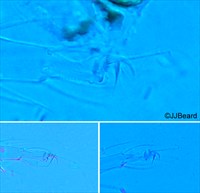
Fig. 3. Panonychus elongatus adult female (non-type) - detail of empodia.
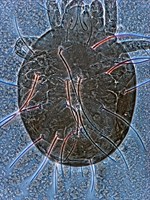
Fig. 4. Panonychus elongatus adult female (non-type) - dorsal habitus.
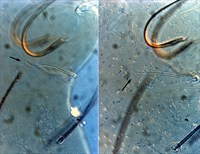
Fig. 5. Panonychus elongatus adult female (non-type) - detail of peritreme on same individual (arrows indicate tip).
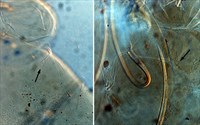
Fig. 6. Panonychus elongatus adult female (non-type) - detail of peritreme (arrows indicate tip).
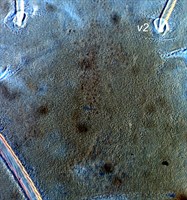
Fig. 7. Panonychus elongatus adult female (non-type) - detail of cuticle pattern on prodorsum.
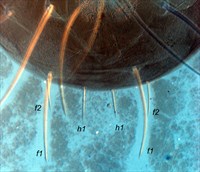
Fig. 8. Panonychus elongatus adult female (non-type) - detail of posterior opisthosomal setae f1, f2, h1.
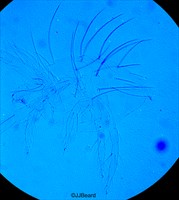
Fig. 9. Panonychus elongatus adult male (non-type) - lateral habitus.
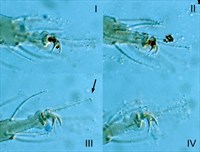
Fig. 10. Panonychus elongatus adult male (non-type) - detail of claws I-IV (arrow indicates the long tenent hairs on lateral true claws).
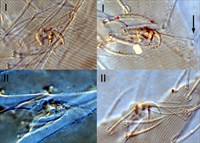
Fig. 11. Panonychus elongatus adult male (non-type) - detail of claws I and II (arrow indicates the long tenent hairs on lateral true claws).
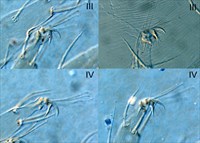
Fig. 12. Panonychus elongatus adult male (non-type) - detail of claws III and IV.
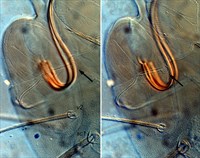
Fig. 13. Panonychus elongatus adult male (non-type) - detail of peritreme on same individual (arrows indicate tip).
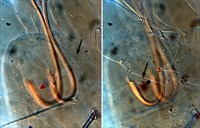
Fig. 14. Panonychus elongatus adult male (non-type) - detail of peritreme on same individual (arrows indicate tip).
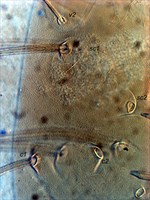
Fig. 15. Panonychus elongatus adult male (non-type) - detail of cuticle pattern on prodorsum.
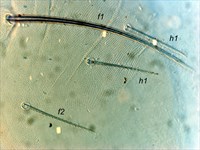
Fig. 16. Panonychus elongatus adult male (non-type) - detail of posterior opisthosomal setae f1, f2, h1.
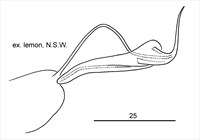
Fig. 17. Panonychus elongatus adult male (non-type) - detail of aedeagus.
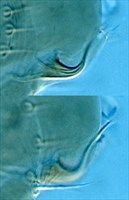
Fig. 18. Panonychus elongatus adult male (non-type) - detail of aedeagus (at different focal points).
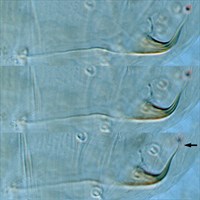
Fig. 19. Panonychus elongatus adult male (non-type) - detail of aedeagus (at different focal points; arrow indicates tip).

Fig. 20. Panonychus elongatus adult male (non-type) - detail of aedeagus (at different focal points; arrow indicates tip).
Material examined
non-types
Taxonomy
Subfamily Tetranychinae
Tribe Tetranychini
Common Name
none
Distribution
+Australia, *Burma, China, Korea, Papua New Guinea, Taiwan, Thailand
Taxonomy Changes
none
Diagnosis
Female
- empodia I-IV = short, strongly curved claw, shorter than proximoventral hairs; lower proximoventral hair significantly longer and thicker than others (Figs 1-3)
- pregenital striae entirely longitudinal
- dorsal setae set on tubercles (Fig. 4)
- peritreme ending in small rounded expansion (Figs 5, 6)
- lobes on dorsal striae small, triangular, closely spaced (Fig. 7; see also Fig. 15)
- dorsal setae strongly but finely barbed
- dorsal setae f1 much longer than h1 & f2 (Fig. 8)
- dorsal setae h1 and f2 subequal in length (Fig. 8)
- tarsus I with the sockets of three tactile setae and one solenidion proximal to, and two tactile setae overlapping, the socket of the proximal duplex seta
- tarsus II with the sockets of two tactile setae and one solenidion proximal to, and two tactile setae overlapping, the socket of the duplex seta
Male (Fig. 9) as per female plus:
- peritreme ending in a simple bulb (Figs 13, 14)
- dorsal cuticle with minute lobes, closely spaced; cuticle with spiculate appearance (Fig. 15)
- dorsal setae f1 much longer than h1 & f2, as in female (Fig. 16)
- dorsal setae h1 & f2 subequal in length, as in female (Fig. 16)
- tarsus I with the sockets of three tactile setae and three solenidia proximal to the socket of the proximal duplex seta
- aedeagus dorsally directed, finely tapered with no anterior or posterior projections; shaft abruptly tapering to form dorsal projection; dorsal margin of shaft at 45° angle to ventral margin, broadly curving dorsally at 60-70° angle, then tip curving posteriorly at 45° angle; dorsal projection elongate, finely tapered towards tip (Figs 17-20)
Hosts
Approximately 20 recorded species of host plant including: Azadirachta indica (Meliaceae), Carica papaya (Caricaceae), Cedrela odorata, C. toona (Meliaceae), *Citrus sp., Citrus limon, C. reticulata, C. sinensis (Rutaceae), Ficus sp., Morus sp. (Moraceae), Osmanthus persicum (Oleaceae), Pyrus communis, Rosa spp. (Rosaceae), Teramnus uncinatus (Fabaceae)
Similar Taxa
Biology
Listed as minor pest of citrus (Gerson 2003).
References
*Manson, D.C.M. (1963) Mites of the families Tetranychidae and Tenuipalpidae associated with citrus in South East Asia. Acarologia 5: 351-364
+Manson, D.C.M. (1968) Panonychus elongatus Manson (Acarina: Tetranychidae) - a description and comparison with P. citri (McG.). Journal of the Australian Entomological Society 7: 6-10
Notes
see Panonychus citri Notes.
Copyright © 2018. All rights reserved.